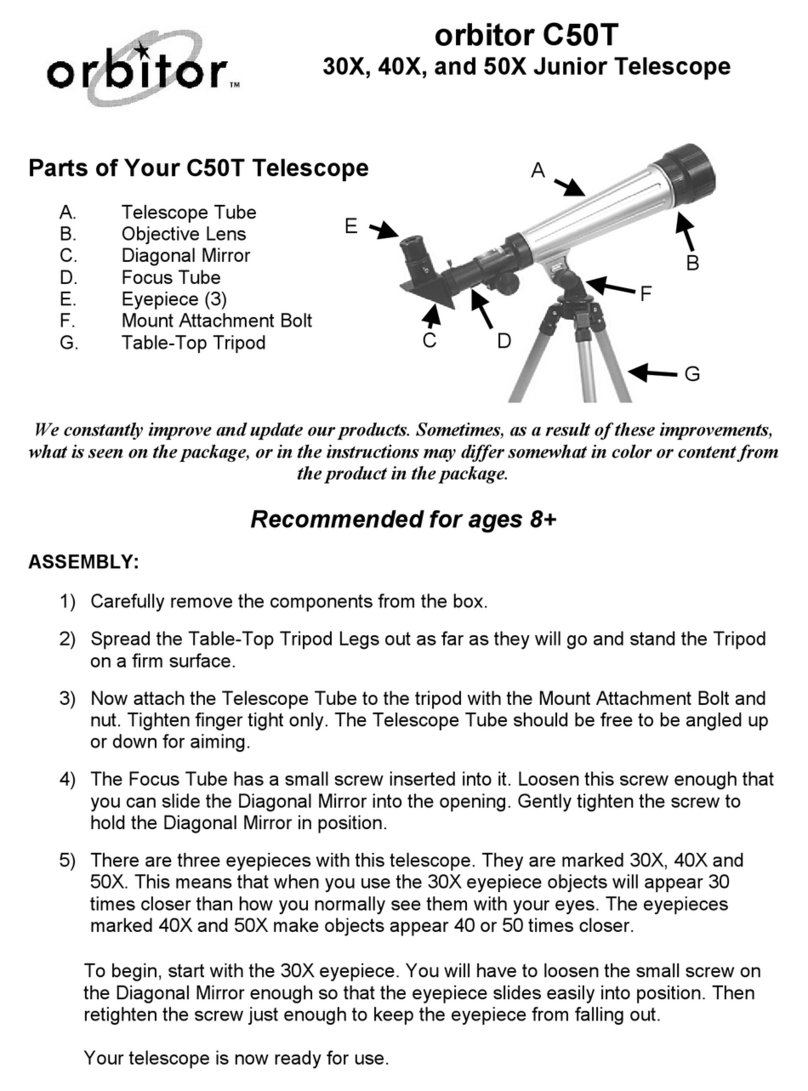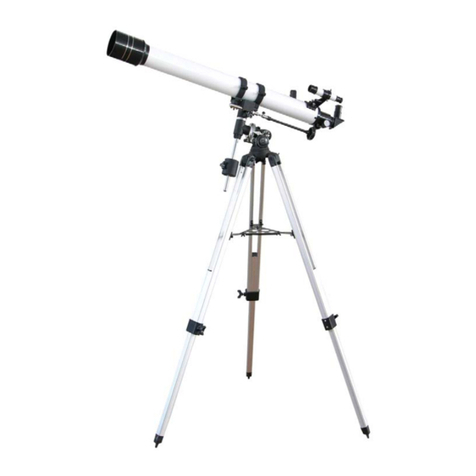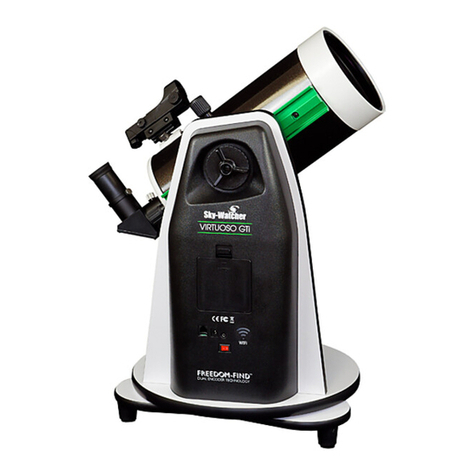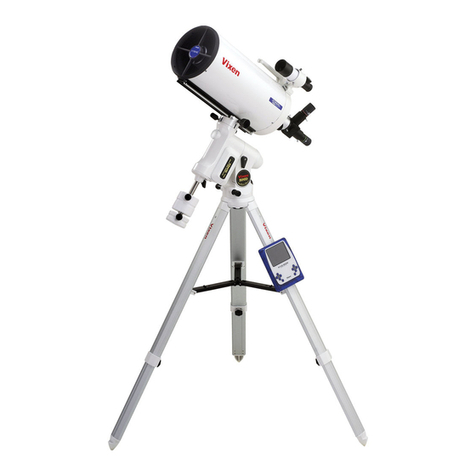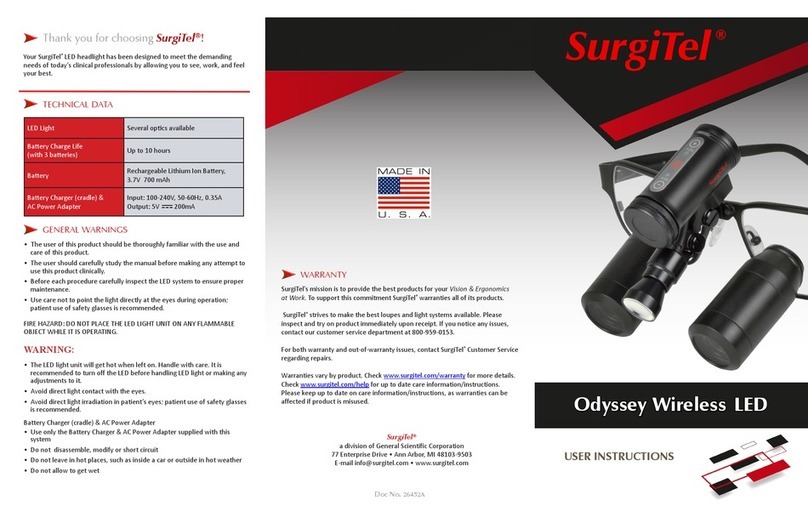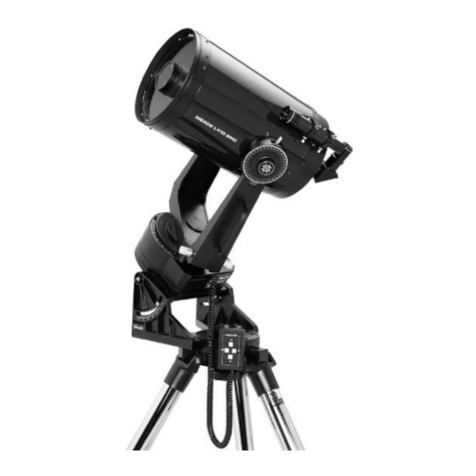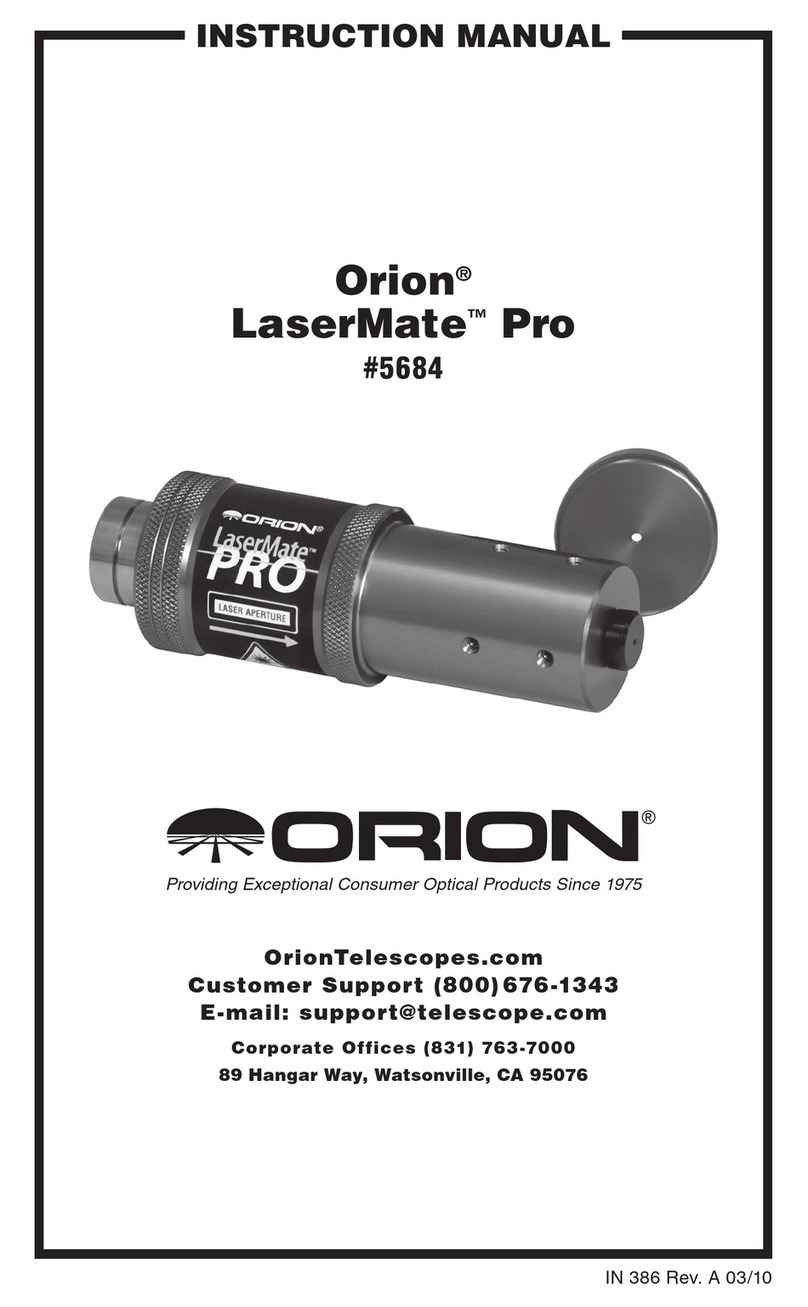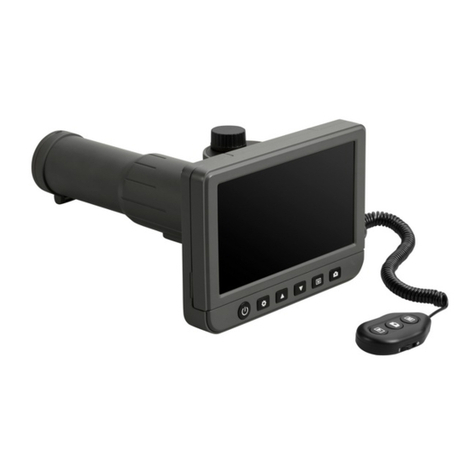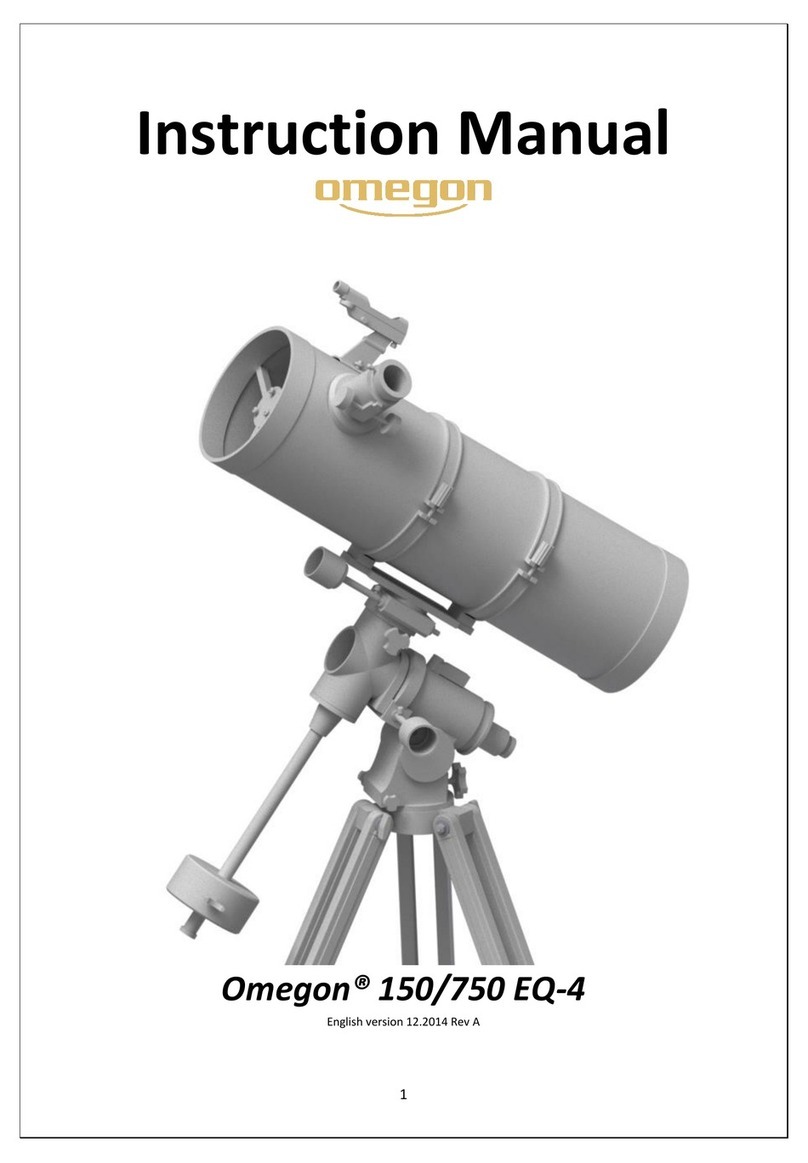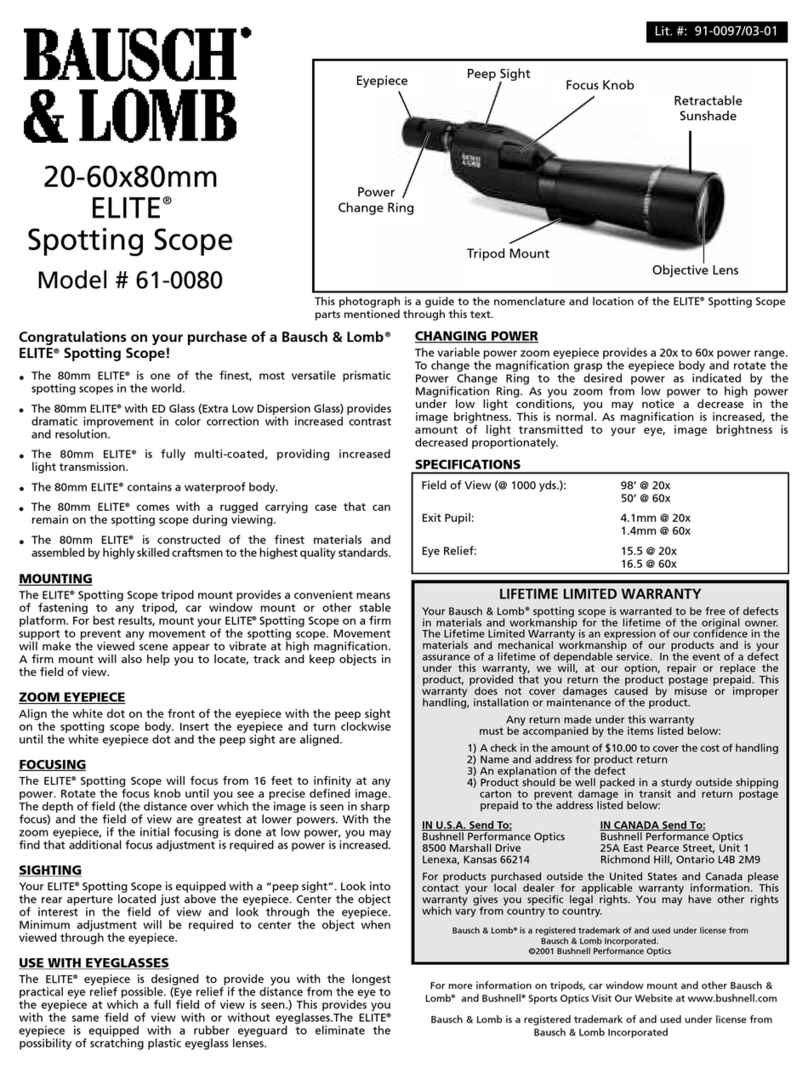Discovery Kids TDK23 User manual

Please retain the information on this manual
for future reference.
Colour, designs and decorations may vary
from those shown in the photographs.
Printed in China.
Customer Services:
+44 (0)1702 208175
Item no. TDK23
© 2016 Discovery Communications LLC.
Discovery kids and the Discovery Kids logo are
trademarks of Discovery Communications,
LLC, used under license. All Rights Reserved.
discoverykids.com www.trendsuk.co.uk
Distributed by Trends UK Ltd,
Harwell Innovation Centre,
Curie Avenue, Harwell Oxford,
Didcot OX11 0QG. UK
Email: [email protected]
Do not view the sun
through the telescope as serious injury to
the eye may occur. To be used under the
direct supervision of an adult.
WARNING!
Inspired by
AGES
8+
40mm Astronomical Telescope
40mm Astronomical Telescope
Instruction Manual
VIEW THE
MOON, STARS
AND OTHER
PLANETS WITH THIS
25 TO 50X
TELESCOPE
10 &
20mm
EYEPIECES

2 3
Inspired by
1. Carefully remove all parts from
the box. When you remove your
telescope from its box, the
diagonal mirror and low-power
20mm eyepiece are already
fitted. It is recommended that you
start viewing the moon and stars
with the 20mm eyepiece because
it gives you the widest angle with
the brightest and sharpest views.
2. Stand the tripod vertically and
spread the three legs fully apart.
3. Adjust the angle of the telescope
by first releasing the bolt
(see right) and wing nut
that secures the
telescope tube to the
tripod bracket. Move
the telescope as
desired and secure
with the bolt and wing
nut, being careful not
to over-tighten.
NOTE: Objects will
appear right-side up in
your telescope, but reversed,
like a reflection in a mirror.
This is normal and does not
indicate a problem.
4. For greater magnification,
release the thumbscrew securing
the 20mm eyepiece, remove and
replace with the 10mm eyepiece.
Using Your
Telescope
Components
VIEW THE
MOON, STARS
AND OTHER
PLANETS WITH THIS
25 TO 50X
TELESCOPE
Objective Lens
Lens Hood
Telescope Tube
20mm
Eyepiece
10mm
Eyepiece
Focus Tube
Lens Cap
Bracket
Knob
Focus
Wheel
Diagonal
Mirror
Tripod
Thumbscrew

1. The best way to use your telescope
is outside, because viewing
through windows (even if they
are open) can be distorted by
reflections from the glass or
by air currents (differing
temperatures) passing
through a window.
2. Let your telescope adjust to
the outside temperature before
use. Your telescope will work
better if the lenses and the air
inside the tube are the same
temperature as outside, so give it
up to 30 minutes to equalise.
3. Try to find a viewing spot that is
away from glaring lights. If you live
in a city, your viewing can be
reduced by too much lighting,
and it's best to use the
telescope where it is as dark
as possible.
4. Try to avoid sudden
changes of temperature,
as this may cause
condensation on your
lens (for example,
carrying your telescope
in from a very cold wintry
outside to a very warm house
interior). If this occurs, leave
the lens cap off, tilt the lens face
down and wait till the telescope
reaches room temperature before
storing it.
Helpful Hints
4 5
Inspired by
The magnification of a telescope indicates
how much an image is enlarged or how
big and close it appears to the viewer. The
focal length of the eyepiece combined
with the focal length of the telescope
determine the magnification. To calculate
the magnification of your telescope with
any particular eyepiece, simply divide the
focal length of the telescope (500mm) by
the focal length of the eyepiece (indicated
in ‘mm’ on the eyepiece collar).
The two eyepieces included provide
the following magnification:
About Magnification
TELESCOPES
HAVE BEEN USED
FOR HUNDREDS OF
YEARS. IT WAS EARLY
VERSIONS THAT SHOWED
THAT EARTH WAS NOT
THE CENTRE OF THE
UNIVERSE, AS WAS
PREVIOUSLY
BELIEVED.
THE BEST TIME
TO LOOK AT THE
MOON IS WHEN IT IS
LESS THAN HALF FULL,
BECAUSE THE DIVIDING LINE
BETWEEN THE DARK AND
LIGHT OF THE MOON CALLED
THE TERMINATOR SHOWS
THE BEST DETAIL IN
THE CRATERS AND
MOUNTAINS.
MODERN
TELESCOPES
LIKE NASA'S HUBBLE
SPACE TELESCOPE
PROVIDE EVIDENCE
OF BILLIONS OF
GALAXIES, EACH CON
TAINING BILLIONS
OF STARS LIKE
OUR SUN.
Example 500mm focal length tube = 25X magnification
20mm focal length eyepiece
10mm eyepiece = 50X
20mm eyepiece = 25X
VIEW THE
MOON, STARS
AND OTHER
PLANETS WITH THIS
25 TO 50X
TELESCOPE

The lens and eyepieces in your
telescope can get dirty over time, and
utmost care must be taken when
cleaning them. Here are some tips for
keeping your telescope in good
working order:
1. Keep the dust caps on when not in
use or when transporting the
telescope.
2. Condensation can occur when the
telescope is not in use. If this
happens, remove the dust caps
and allow the moisture to
evaporate naturally. While doing
this, keep the telescope pointing
downwards to avoid dust
accumulating on it. Replace the
cap as soon as the condensation
has gone.
3. If the lens looks like it is dusty, try
blowing away any particles. If your
lens requires more cleaning then
use a moistened lens tissue or
cloth (not included).
Taking Care Of Your Telescope
6 7
Inspired by
Notes
WHEN
LOOKING AT THE
NIGHT SKY, STARS
WILL TWINKLE BUT
PLANETS, ALTHOUGH
AS BRIGHT, WILL
SHOW AS A
CONSTANT
LIGHT.
Table of contents

